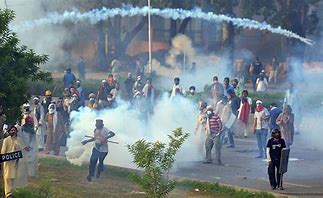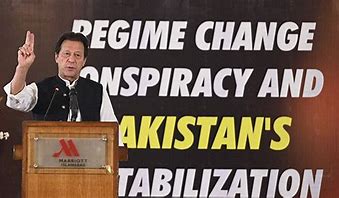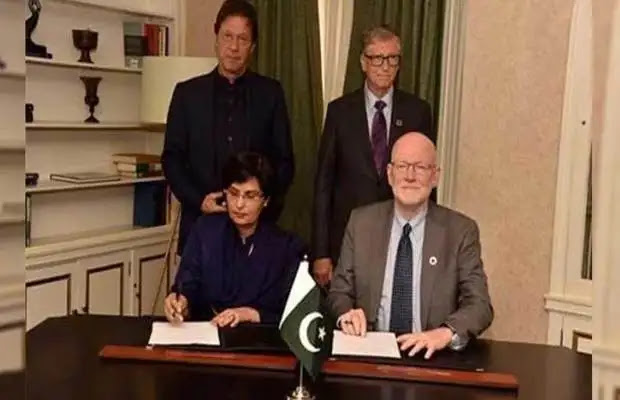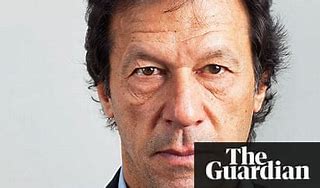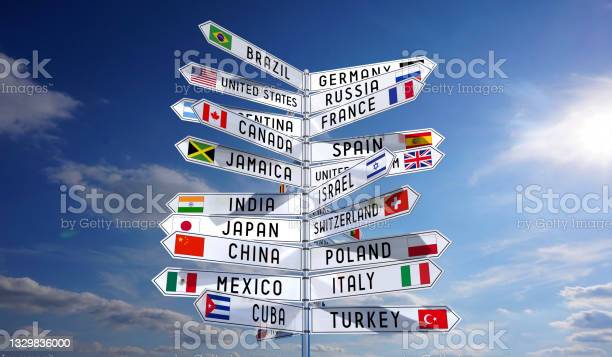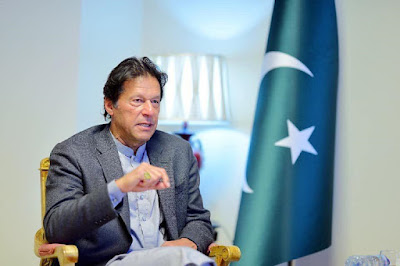The United States has a complex relationship with Pakistan, shaped by various factors including security concerns, economic interests, and geopolitical considerations. In recent years, the association has been strained due to a variety of issues, including Pakistan’s perceived lack of action against militant groups operating in its territory, as well as concerns about Pakistan’s nuclear weapons program and its growing ties with China.
From the US perspective, the relationship with Pakistan has been primarily driven by security considerations, particularly in the aftermath of the September 11, 2001 attacks. The US has relied on Pakistan’s cooperation in its efforts to combat terrorism in the region, including the War on Terror in Afghanistan. However, this relationship has been marked by periods of tension, particularly when Pakistan has been perceived as not doing enough to combat militant groups operating in its territory. The US has also had concerns about Pakistan’s nuclear weapons program and the potential for nuclear proliferation. In recent years, the US has sought to engage with Pakistan on non-proliferation issues, including through the implementation of the Nuclear Security Summit process. In addition to security considerations, the US has also had economic interests in Pakistan, including access to regional markets and the potential for investment in Pakistan’s energy sector. The US has also provided significant development assistance to Pakistan over the years, aimed at promoting economic growth and stability. Going forward, the US-Pakistan relationship is likely to be shaped by several factors, including the US’ approach to containing China’s rise, the ongoing situation in Afghanistan, and the outcome of Pakistan’s political and economic developments. Regardless of the challenges, the US and Pakistan are likely to continue to seek ways to cooperate and find common ground, given the importance of the relationship for both countries. The United States recognized the independence of Pakistan on August 15, 1947, when President Harry S. Truman sent a message of congratulations to Mohammed Ali Jinnah, the Governor General of Pakistan, marking its emergence as a nation. Before this, the territory of Pakistan was part of British India within the British Empire. Diplomatic relations between the United States and Pakistan were established on August 15, 1947, when the U.S. Department of State opened the American Embassy in Karachi with Charles W. Lewis, Jr. as the Chargé d’Affaires ad interim. Since then, the United States and Pakistan have had a long-standing relationship built on mutual interests and shared values. Additionally, the United States is committed to working with Pakistan to address regional security concerns, including countering terrorism and promoting stability in Afghanistan. The U.S. government provides significant military and civilian assistance to Pakistan to support its efforts to maintain security and stability in the region. The United States and Pakistan also collaborate on regional and global health initiatives, including efforts to prevent, detect and respond to infectious diseases, such as HIV/AIDS, tuberculosis, and malaria. The U.S. government also supports education and cultural exchanges between the two countries to strengthen the people-to-people ties between the United States and Pakistan. These exchanges provide opportunities for young leaders from both countries to interact, build relationships, and gain a deeper understanding of each other’s cultures and values. The U.S. government remains committed to supporting Pakistan’s efforts to promote stability, security, and economic growth and to strengthen the bilateral relationship between the two countries.
Imran Khan & Donald Trump
With the start of the 21st Century, the relationship between the United States and South Asia has changed and the way major powers relate to it has also changed. After a difficult period in the history of relations, due largely to the ongoing conflict in Afghanistan and the growing relationship between the United States and India, the relationship between the United States and Pakistan may see some stability and new meaning under the leadership of President Biden. The United States is now viewing its relationship with Pakistan as part of its broader interests in South Asia, which includes geopolitical, regional, and security-related issues. Some of these interests are better served by India, while others are better served by Pakistan. These two relationships serve different U.S. purposes and there may be some overlap and conflict between them. To maximize the benefits of both relationships, especially the more important relationship with India, the United States will avoid getting involved in disputes between India and Pakistan, except for crisis management. Pakistan’s relationship with the United States and China is influenced by the changing geopolitical landscape and competition between the two powers. The country’s location and close ties with China can be seen as both an asset and a liability, depending on how Pakistan chooses to navigate these relationships. To maximize its benefits, Pakistan needs to learn from its past experiences in relations and adapt to the changing circumstances in the region. Pakistan needs to understand how its actions can impact its relationships with both the United States and China and to make decisions that align with its interests and priorities. Pakistan needs to pursue its national interests, maintain a balanced relationship with different world powers, and focus on building its internal strengths and stability. Achieving peace in the region, enhancing its economic potential, and contributing to regional stability would be positive steps towards improving its relationship with the US, but it should not rely solely on this relationship and should have a balanced approach. The relationship with the US should be viewed as one of many important relationships, but not the only critical one.
General Pervez Musharraf & G.W Bush
Furthermore, the United States and Pakistan have collaborated on numerous initiatives to promote sustainable development and reduce poverty. The U.S. government provides support for programs focused on promoting good governance, strengthening the rule of law, and improving the delivery of essential services such as healthcare, education, and water management. These programs help to increase the capacity of local communities and institutions to improve the lives of the most vulnerable populations. The United States and Pakistan have also been working together to address energy security and promote clean energy solutions in Pakistan. This includes supporting the development of hydro, solar, and wind energy projects, as well as helping Pakistan to upgrade its energy transmission and distribution networks. The U.S. government is also working with Pakistani businesses and policymakers to promote energy efficiency and encourage the use of energy-efficient technologies. The U.S. government is committed to supporting Pakistan’s efforts to improve the lives of its people, enhance regional stability and security, and promote sustainable economic growth. The US provided more than $568 million in aid for earthquake relief and recovery efforts in 2005. The US has continued to provide humanitarian and development assistance to Pakistan, including supporting the country’s efforts to improve its education and health systems and to promote economic growth. The U.S. government also recognizes the sacrifices made by the Pakistani military and security forces in the fight against terrorism. The U.S. government provides training and technical assistance to Pakistan’s security forces to improve their capabilities and to help them to better address the threat posed by terrorism. This includes programs to strengthen the ability of Pakistani law enforcement and military units to investigate, prosecute and prevent terrorist attacks. However, despite these efforts, the threat posed by terrorism remains a significant concern in Pakistan and the region. The U.S. government is committed to working with Pakistan to address this threat and to promote stability and security in the region. This includes supporting Pakistan’s efforts to disrupt and dismantle terrorist networks, strengthening its border security, and promoting stability and development in the region.
However, the US-Pakistan relationship has been strained at times, particularly over the issue of counterterrorism efforts and US drone strikes in Pakistan. The relationship between the United States and Pakistan faced several challenges and controversies during the years following the September 11 attacks. In 2008, the U.S. accused Pakistan’s intelligence agency, the Inter-Services Intelligence (ISI) of tipping off jihadists ahead of U.S. attacks, which further strained the relationship. The same year, the Gora Prai airstrike on the Afghanistan-Pakistan border worsened the relationship, as the Pakistani military accused the U.S. of aggression. There have also been concerns over the transparency and accountability of U.S. military aid to Pakistan, as well as the large proportion of economic aid that has gone towards overhead costs and consulting fees. The relationship was further tested in 2008 with the Mumbai attacks, where the U.S. expected full cooperation from Pakistan in finding the plotters of the attacks. These challenges have been significant factors in the often-tumultuous U.S.-Pakistan relationship over the years. The relationship between the United States and Pakistan has been marked by its ups and downs over the years and has been influenced by a variety of factors including geopolitical changes, military aid, terrorism concerns, and economic relations. After the September 11 attacks, Pakistan became a key ally in the war on terror, receiving US aid and debt forgiveness. However, the relationship has been strained at times, with the US accusing Pakistan of tipping off terrorists and misspending military aid. The present state of US-Pakistan relations is marked by a complex interplay of geopolitical, economic and security interests. The relationship between the two countries is characterized by a lack of trust, which has led to difficulties in achieving successful cooperation. Despite recent challenges, both the US and Pakistan continue to recognize the importance of working together to combat terrorism and other common threats. However, the US’s relationship with Pakistan is complicated by the presence of other major players, such as India and China, in the region. This makes it difficult for the US to take unilateral action in its relationship with Pakistan. Nevertheless, both countries are committed to building a strong and productive relationship for the future. In conclusion, the U.S. government recognizes the challenges faced by Pakistan in combating terrorism and ensuring internal security.
Pakistan PerspectiveFrom the perspective of Pakistan, the US-Pakistan relationship is seen as crucial but complex and at times challenging. Pakistan views the US as a major player in international politics and economic affairs, and as such, seeks to maintain friendly relations with the US. Pakistan also recognizes the importance of the US as a major player in financial institutions such as the International Monetary Fund (IMF), which can play a significant role in addressing the country’s economic challenges. At the same time, Pakistan also seeks to balance its relationship with the US and other major powers, including China, to maintain its independence and protect its national interests. The China-Pakistan Economic Corridor (CPEC) is an example of this balancing act, as it seeks to deepen Pakistan’s economic ties with China while also seeking closer ties with the US. In recent years, there have been tensions in the relationship, especially under the previous government led by Prime Minister Imran Khan, who adopted a more populist and anti-American stance. The recent change in government and the election of Prime Minister Shehbaz Sharif has some soft corners for resetting the relationship and strengthening ties between the two countries. Because the PDM government is run by leaders who have properties in Europe and America. Pakistan has been a key player in the US’s efforts to fight terrorism and has suffered significant losses, with over 80,000 civilians, more than 10,000 troops and policemen losing their lives, and a $70B infrastructural thrashing. The US has promised to reimburse Pakistan for its expenses, with only $20 billion in military assistance being given to Pakistan since 2001. However, there have been instances where the US has suspended or cut aid due to concerns over Pakistan’s support for certain extremist groups. Despite these difficulties, both countries continue to seek a productive relationship in the fight against terrorism. The suspension of aid has led to further deterioration in US-Pakistan relations and a decrease in cooperation in the fight against terrorism. However, some US officials have stated that it is important to maintain a relationship with Pakistan due to its geographical location and potential to help in the peace process in Afghanistan. Despite the challenges, both countries have continued to engage in diplomatic talks to improve the relationship and address common security concerns.
Pakistan lost 80,000 lives and Infrastructure Worth $70B During the War on Terror
The dispute over $300 million of military aid being postponed by the Department of Defense in 2018 highlights the tensions in US-Pakistan relations. According to the US, the aid was part of the Coalition Support Fund (CFS) and was not previously owed to Pakistan. However, Pakistani Foreign Minister Shah Mehmood Qureshi stated that the money was spent from Pakistan’s resources in the war against terrorism and was supposed to be reimbursed by the US. The US accused the postponement of the transfer of aid due to a lack of effort by the Pakistan Government in combating terrorist organizations in their country. The issue caused tensions between the two countries and was not discussed during Secretary of State Mike Pompeo’s visit to Pakistan in September 2018, the first visit of the Trump administration. After the US withdraws from Afghanistan in 2021, the relationship between the two countries became more distant.The change in leadership in Pakistan and the ouster of former Prime Minister Imran Khan have added new challenges to the already strained US-Pakistan relationship. Imran Khan, the former Prime Minister of Pakistan, had written a letter to the Chief Justice of Pakistan asking for an investigation into the allegations that the United States was involved in his removal from office. Khan had accused the US of pursuing an independent foreign policy that favoured China and Russia, which led to his ouster. The letter highlights Khan’s concerns about the US influence in Pakistani politics and the perceived interference in the country’s internal affairs. However, it is important to note that these allegations have not been substantiated with concrete evidence, and further investigation is necessary to determine the validity of these claims.The new Prime Minister, Shehbaz Sharif, will face the task of repairing the US-Pakistan relationship, which is primarily focused on security issues such as nuclear proliferation, terrorism, and Afghanistan. The US wants to maintain good ties with the new government while urging them to use their influence with the Taliban. The scope of bilateral relations is narrow and security-centric, but it is in US & Pakistan’s best interest to work towards a reset in their relationship. The United States and Pakistan have had a tumultuous relationship in recent years, with ups and downs, particularly under the previous Pakistani Prime Minister, Imran Khan. Despite some improvement in the relationship after a meeting between Khan and former U.S. President Donald Trump in 2019, the relationship saw a downturn by the end of the year when Pakistan received a less favourable reception from the Biden administration. This summary accurately describes the relationship between the Biden administration and Pakistan. After the U.S. pullout from Afghanistan, the Biden administration’s focus on strategic competition with China increased, which kept Pakistan at a distance due to its economic ties with China. This strained relationship with the U.S. was further exacerbated by then-Prime Minister Khan blaming the U.S. for the economic losses and loss of human life in Pakistan as a result of the War on Terror. The lack of communication between Biden and Khan was also a source of controversy, and ultimately, the building animosity between the two leaders contributed to Khan’s loss of the vote of no confidence. In his inaugural speech to Parliament, Shehbaz Sharif expressed his desire for friendly ties with the United States, recognizing the importance of the relationship for the country’s economy. The formation of a government in Pakistan and its policies are decided by a complex mix of factors, including political ideology, public support, and regional and global dynamics. The personal properties of political leaders in foreign countries may play a vital role in many cases. The US is Pakistan’s largest export market, followed by China, and Pakistan needs US support to revive its 22nd IMF program. Additionally, the US assisted Pakistan in getting off the Financial Action Task Force’s grey list, which the country was on due to allegations of money laundering and terror financing. In summary, U.S.-Pakistan ties under Shehbaz Sharif are likely to be focused on repairing the strained relationship and resetting ties with the United States. The PPP, being coalition partners of Sharif’s PML-N, has good ties with President Biden and is expected to use its connections to repair the relationship. The military establishment in Pakistan supports these efforts and wants to balance ties with China and the United States. However, even if U.S.-Pakistan ties improve, they are likely to remain transactional and security-centric, as the U.S.’s long-term strategic interest in containing China aligns with India, not Pakistan. The U.S. will view its future engagement with the Pakistani government through the lens of the China-Pakistan Economic Corridor (CPEC). While the U.S. continues to emphasize the importance of combating terrorism and maintaining a strong, democratic Pakistan, there have been positive signals from both sides that indicate a willingness to reset ties and improve the relationship. However, it remains to be seen how this relationship will develop and if it will be limited to security and transactional concerns or if it will expand to include a wider range of issues. The U.S. could assist by advocating for Pakistan’s economy through the IMF and bringing more investment and improving trade relationships, while Pakistan needs to make sincere efforts to restore trust and broaden the scope of the relationship beyond a security-centric focus.
Pakistan Protesting Against Terrorism and Drone Attacks in Trible Areas
In 2022, the United States and India called on Pakistan to take action against terrorism and U.S. President Joe Biden referred to Pakistan as “one of the most dangerous nations in the world.” However, in 2023, the US demonstrated positive relations with Pakistan by allowing it to purchase Russian oil at a discounted price.
Relations between any two countries should be based on mutual respect, cooperation, and understanding. A relationship built on a foundation of equality and mutual benefit is much more likely to be productive and long-lasting than one based on an unequal power dynamic. In a healthy relationship, both parties work together to address challenges and pursue shared goals, and both parties benefit from the relationship. A relationship between the United States and Pakistan should be based on these principles and should prioritize cooperation, mutual benefit, and mutual respect.



